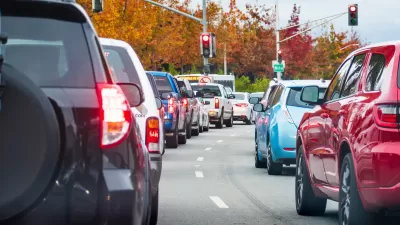A new report released last week documents the energy use of New York's largest buildings for the first time ever. It's the first step in tackling the source of two-thirds of the city's greenhouse gas emissions.
According to Mireya Navarro, the new report, released last week by New York City's Office of Long-Term Planning and Sustainability delivered some fascinating, and unexpected, findings. Among the results reported in the study, mandated by a 2009 law intended to help reduce the city's greenhouse gas emissions, "the least-efficient residential buildings were found in neighborhoods that also reported high asthma rates," and Williamsburg (11211) in Brooklyn and Richmond Town (10306) on Staten Island were the most energy efficient neighborhoods in the city, reports Navarro. Sharp discrepancies in energy usage among buildings of comparable size and use were also reported.
The study covered individual buildings of over 50,000 square
feet and multiple-building properties with a total of more than 100,000
square feet, which although making up just 2 percent of the city's one million buildings, "account for 45 percent of the energy used by all New
York buildings."
Perhaps the most important finding: "if poor-performing buildings in the city improved their
efficiency and reached just the median level of energy use in their
categories, the city's energy consumption would decline by at least 18
percent and greenhouse gas emissions would be cut by 24 percent," writes Navarro.
FULL STORY: Wide Differences Found in Buildings’ Power Use

Depopulation Patterns Get Weird
A recent ranking of “declining” cities heavily features some of the most expensive cities in the country — including New York City and a half-dozen in the San Francisco Bay Area.

California Exodus: Population Drops Below 39 Million
Never mind the 40 million that demographers predicted the Golden State would reach by 2018. The state's population dipped below 39 million to 38.965 million last July, according to Census data released in March, the lowest since 2015.

Chicago to Turn High-Rise Offices into Housing
Four commercial buildings in the Chicago Loop have been approved for redevelopment into housing in a bid to revitalize the city’s downtown post-pandemic.

Meet NYC’s New Office of Livable Streets
The NYC DOT program will build on pandemic-era initiatives to promote safe and comfortable streets that enhance community and expand uses beyond just moving cars.

Transit Riders Face the Highest Safety Risks in These 10 States
According to federal data, the average number of safety incidents on public transportation averaged 55.2 per 100,000 people across all states between 2010 and 2023. Which states came in well above the national average?

How California Transit Agencies are Addressing Rider Harassment
Safety and harassment are commonly cited reasons passengers, particularly women and girls, avoid public transit.
City of Costa Mesa
Licking County
Barrett Planning Group LLC
HUD's Office of Policy Development and Research
Mpact Transit + Community
HUD's Office of Policy Development and Research
City of Universal City TX
ULI Northwest Arkansas
Town of Zionsville
Urban Design for Planners 1: Software Tools
This six-course series explores essential urban design concepts using open source software and equips planners with the tools they need to participate fully in the urban design process.
Planning for Universal Design
Learn the tools for implementing Universal Design in planning regulations.






















